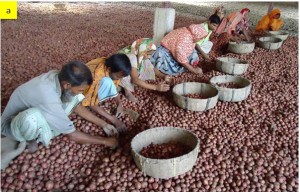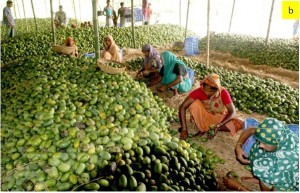Biosensing for Advancing Quality of Agricultural Produce in Bangladesh
By Md. Abdul Momin, Department of Farm Power and Machinery, Bangladesh Agricultural University, Mymensingh
This post is part of the ADM Institute’s #PreventPHL blog campaign, following up on the First International Congress on Postharvest Loss Prevention. To read more posts in the series, click here.

Firstly, I am truly grateful to ADM Institute, University of Illinois, USA, for providing financial support to attend the First International Congress on Postharvest Loss Prevention and have the opportunity to present a research paper.
Wonderfully, the organizers of the PHL prevention congress created a rich academic and research atmosphere which was extremely enjoyable and rewarding. The congress also granted young researchers like me a great opportunity from numerous postharvest aspects of agricultural products; to meet and discuss with distinguished researchers throughout the world, and to share and acknowledge the ideas of each other, and to create a global network among researchers. There were many sessions, such as distinguished lecturers, group discussions, poster presentations, lecturer-participant interactions, excursions, etc, within the conference, and every session gave me an opportunity to talk and discuss a lot and learn from others about various postharvest issues. I think there were plenty of notable things that we acquired by attending the PHL prevention congress and I am confident this experience will be turned to advantage directly or indirectly to improve and develop our research towards the reduction of postharvest loss in the future, as well as to contribute to the advancement of postharvest technology in agriculture.
My presentation focused on the opportunity of a computer vision system with image processing capabilities for advancing the quality of agricultural produce in Bangladesh. Bangladesh produces a substantial amount of agricultural products, but the post-harvest processing is still predominantly being done manually (a) with poor technologies being used for grading, sorting, processing, storage, and packaging; inefficient handling and transportation; involvement of diverse actors and poor infrastructure. As a result, post-harvest losses of agricultural crops, especially perishable products, can reach up to 40 to 50 percent, a situation that is far from satisfactory and can be easily improved with suitable technologies. Given this current state of crop production and processing, for Bangladesh to expand its agricultural sector further it needs to tap into the export and processing markets by upgrading post-harvest management practices (e.g. automatic grading, sorting, inspection, etc.) to ensure value-added, high-quality agricultural produce are supplied by the agro-processing sector.

Considering the possibility of introducing mechanized postharvest processing and quality control in Bangladesh, I recently conducted a feasibility study of a machine vision system for grading mango fruit. Mango (Mangifera indica) is an important and popular fruit among the fruit produced in Bangladesh. It is one of the most relished fruit crops in Bangladesh covering the largest area (32,011 hectares) and the total annual production (104,7849 metric tons) being in the third position after banana and jackfruit (BBS, 2011). However, the postharvest processing of mangos is still predominantly being done manually. The farmers examine all the harvested mangos by eye and sort/grade by hand (b). Traditional visual inspection, which has supported the sorting and grading, is labor intensive, expensive, and prone to human errors and variability. An automated grading system will reduce labor requirements, already in shortage and expensive, available for the most needed farming or horticultural operations thereby increasing the production. A concerted effort in the area of machine vision will improve the quality of mango and empower Bangladesh to compete in the global export trade.
References
BBS. 2011. Yearbook of Agricultural Statistics of Bangladesh 2010. Bangladesh Bureau of Statistics, Statistics Division, Ministry of Planning, Government of the People’s Republic of Bangladesh, 136.
The blog entries in this #PreventPHL series are by students and members of the PHL Prevention community of practice. The opinions expressed are those of the individual authors and do not necessarily reflect the position of the ADM Institute. In addition, none of the statements should be considered an endorsement of any person, product, or technique by the ADM Institute.
